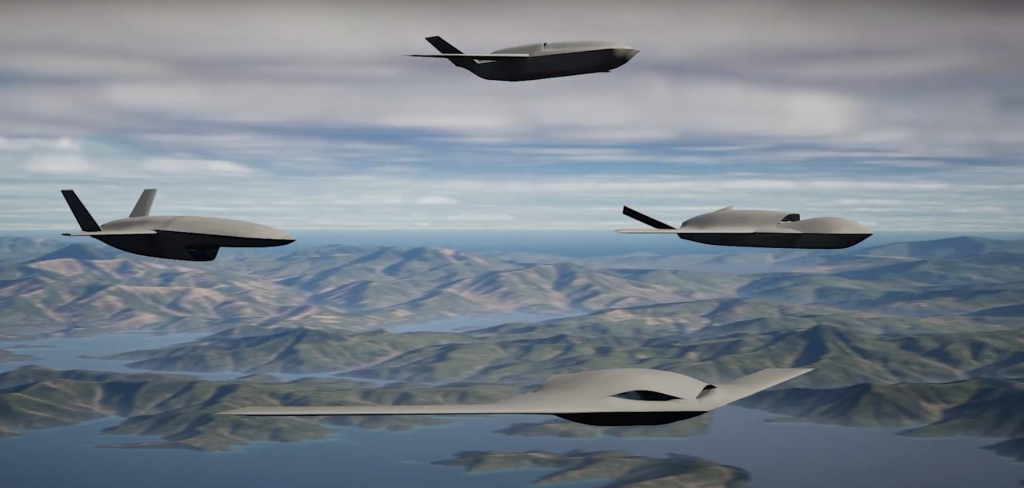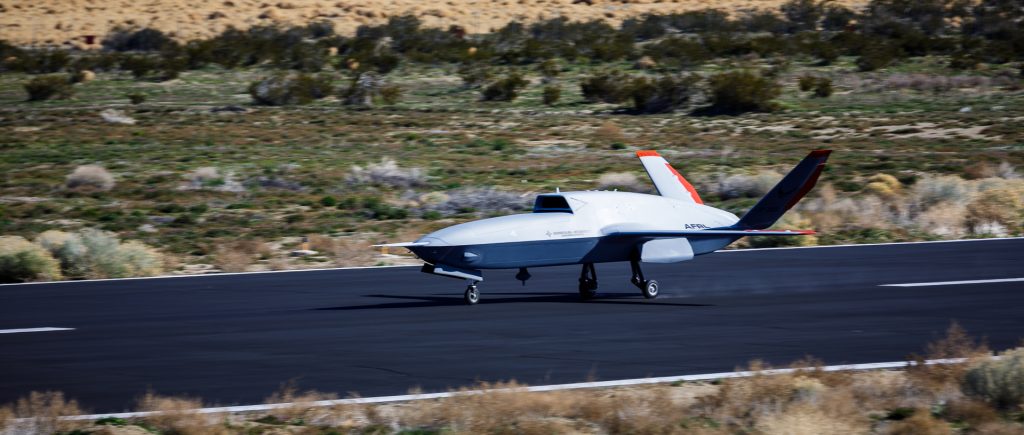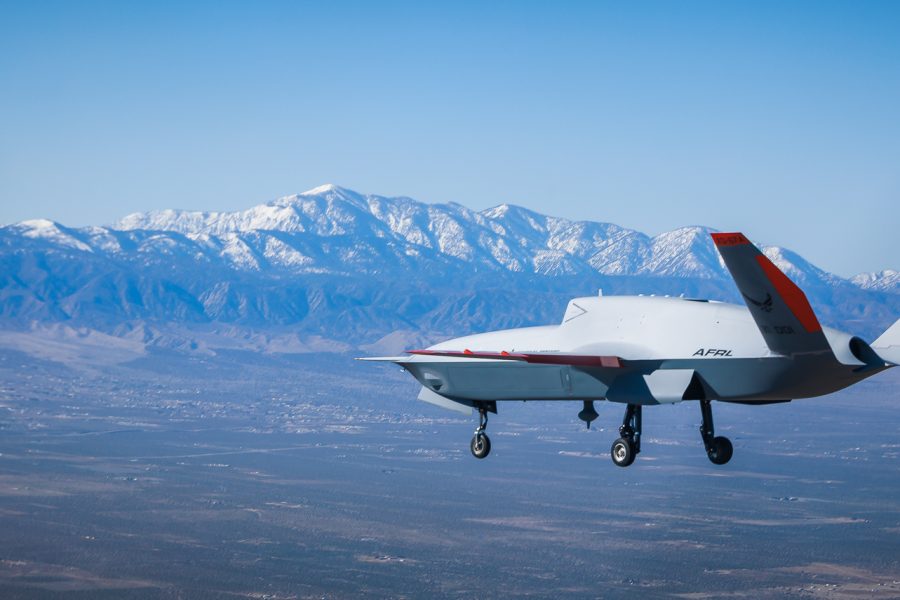The XQ-67A, a new autonomous collaborative combat aircraft, flew for the first time Feb. 28, its maker, General Atomics, and the Air Force Research Laboratory announced.
The aircraft took off from General Atomics’ Gray Butte Flight Operations Facility near Palmdale, Calif., a key milestone for AFRL’s Off-Board Sensing Station, or OBSS, program, which in turn is part of the Air Force’s larger effort to team autonomous collaborative combat aircraft with crewed fighter jets.
AFRL described the XQ-67 as “the first of a second generation of autonomous collaborative platforms,” in a release, aircraft that build on the success of demonstrators like the XQ-58 Valkyrie. It is exemplifies a new approach that the General Atomics and Air Force see as enabling greater flexibility by combining a common chassis and other standard systems with mission-specific features and payloads.
“This approach will help save time and money by leveraging standard substructures and subsystems, similar to how the automotive industry builds a product line,” said Doug Meador, autonomous collaborative platform capability lead with AFRL’s Aerospace Systems Directorate, in a statement. “From there, the genus [or common elements] can be built upon for other aircraft—similar to that of a vehicle frame—with the possibility of adding different aircraft kits to the frame.”
AFRL’s release disclosed a second autonomous collaborative combat aircraft (CCA) concept under development—an Off-Board Weapons Station, or OBWS.
“The OBSS was viewed as slower while carrying sensors but have longer endurance, while the OBWS was considered faster and more maneuverable, with less endurance but better range,” AFRL’s release noted.
“We wanted to design both of those but figure out how much of the two you can make common so we could follow this chassis genus/species type of approach,” Meador said.
Trenton White, OBSS program manager, said the XQ-67 is only the first variant to be built on the General Atomics’ “genus.”

General Atomics has been talking up its common core concept for multiple kinds of autonomous drones since unveiling its Gambit concept two years ago. The company maintains the aircraft’s core components account for roughly 70 percent of its price, with the remaining share paying for its mission systems, be they sensing, communications and electronic warfare, or ground attack.
The Air Force has said it plans to build at least 1,000 Collaborative Combat Aircraft to fly alongside crewed aircraft, greatly expanding combat capacity without putting more personnel at risk. The exact functions of those unmanned aircraft may vary, but experts and officials have said they could include ISR, electronic warfare, and carrying extra weapons.
In January, the Air Force announced it had selected General Atomics as one of five contractors to design CCAs, alongside Boeing, Northrop Grumman, Lockheed Martin, and Anduril. Officials said in February at the AFA Warfare Symposium that they hope to cut that list down to two or three companies to build the first increment of drones.
The CCA program is drawing upon years of experiments, analysis, and testing the Air Force has done on the unmanned, autonomous “wingman” concept. The OBSS program, for example, started with AFRL’s Low Cost Attritable Aircraft Platform Sharing program, which itself is rooted in the Low Cost Attritable Aircraft Technologies initiative that started in late 2014. The lab has also spent years working on Skyborg, an artificial intelligence-enabled system to control unmanned aircraft.
The Air Force first awarded General Atomics and Kratos contracts for OBSS in 2021, then picked General Atomics to move forward on the program in February 2023.

